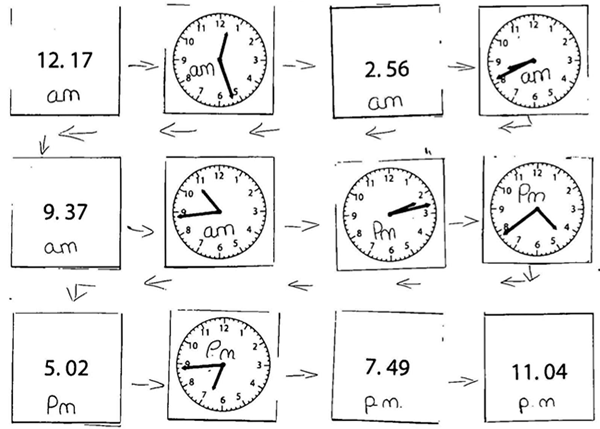Or search by topic
Number and algebra
Geometry and measure
Probability and statistics
Working mathematically
Advanced mathematics
For younger learners
The Time Is ...



- Problem
- Getting Started
- Student Solutions
- Teachers' Resources
I think that some of you didn't notice that the times shown on the clock faces weren't the same as the digital times underneath the clocks so some solutions only included half the number of times we'd given.
Sophie offered this helpful advice:
I did this by looking at the numbers and ordering them earliest to latest. At first I was stuck on the time 00:17, but then I thought: in 24 hour clock, 1 o'clock in the morning is 01:00 so what is midnight?'I realised 00:00 must mean midnight.
Katie from Hymer College Junior School sent us this picture of the order of the 12-hour clocks:

Katie explained what she'd done:
First I labelled them with either "am" or "pm"so it was possible to put them in order.Then I had to work out what each time said on the clock. With this I could put them in order [earliest - latest] easily.
I felt it was easier to set it out in lines like I have. I put arrows on so it was easy to follow.
I also found it was easier to do this on paper than on the computer.
With the 24 hour clock I would do the same except not label them with "am" or "pm".
I wonder whether this is the only solution?
How about the order of the 24-hour times? If you have a solution for this part of the problem, let us know!
You may also like
In Order
Can you rank these quantities in order? You may need to find out extra information or perform some experiments to justify your rankings.
What Is the Time?
Can you put these times on the clocks in order? You might like to arrange them in a circle.

